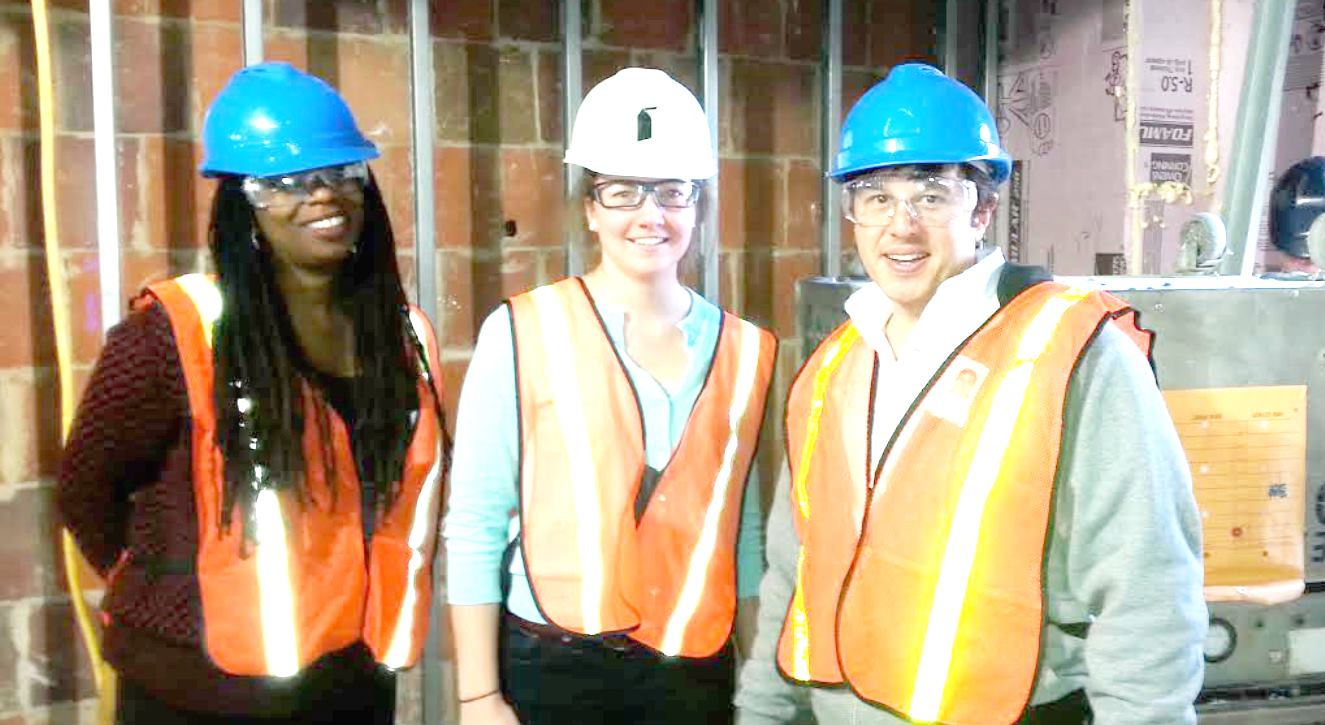Associate Professor Peter LaPuma and Assistant Professor Amanda Northcross of the Milken Institute School of Public Health recently visited the National Institutes of Health’s Division of Occupational Health and Safety to see tests of the blower systems used at construction sites to remove contaminants.
“Many construction sites use these blowers,” LaPuma says. “They are required to get pollutants out of the building to protect workers inside and people outside the building. The high-efficiency particulate air (HEPA) filters in the units protect people in adjacent buildings or nearby spaces” from construction contaminants including welding fumes, paint overspray, and dust from sanding wood, drywall, paint or floors. The blowers can also capture mold and mildew.
People at NIH involved with the project include EOH DrPH student Derek Newcomer and recent MPH Alumna Kelly Bruvik (shown in the above photo). The HEPA filters used in the blowers are designed to capture 99.97% of very small (0.3-micron) particles, and the blowers are often assumed to work properly. However, there is no requirement to test the blowers under real world conditions.
In addition to helping ensure that the public’s health is protected, these tests are important in light of renovations currently going on at the NIH campus. Some of the laboratory experiments being conducted on the campus are sensitive to particles and pollutants that could be released from the renovation, LaPuma points out.
As it turned out, Newcomer, who is in the U.S. Public Health Service, was not at NIH when LaPuma and Northcross visited. He is currently in Sierra Leone, where he was deployed on short notice to assist with the Ebola crisis.


